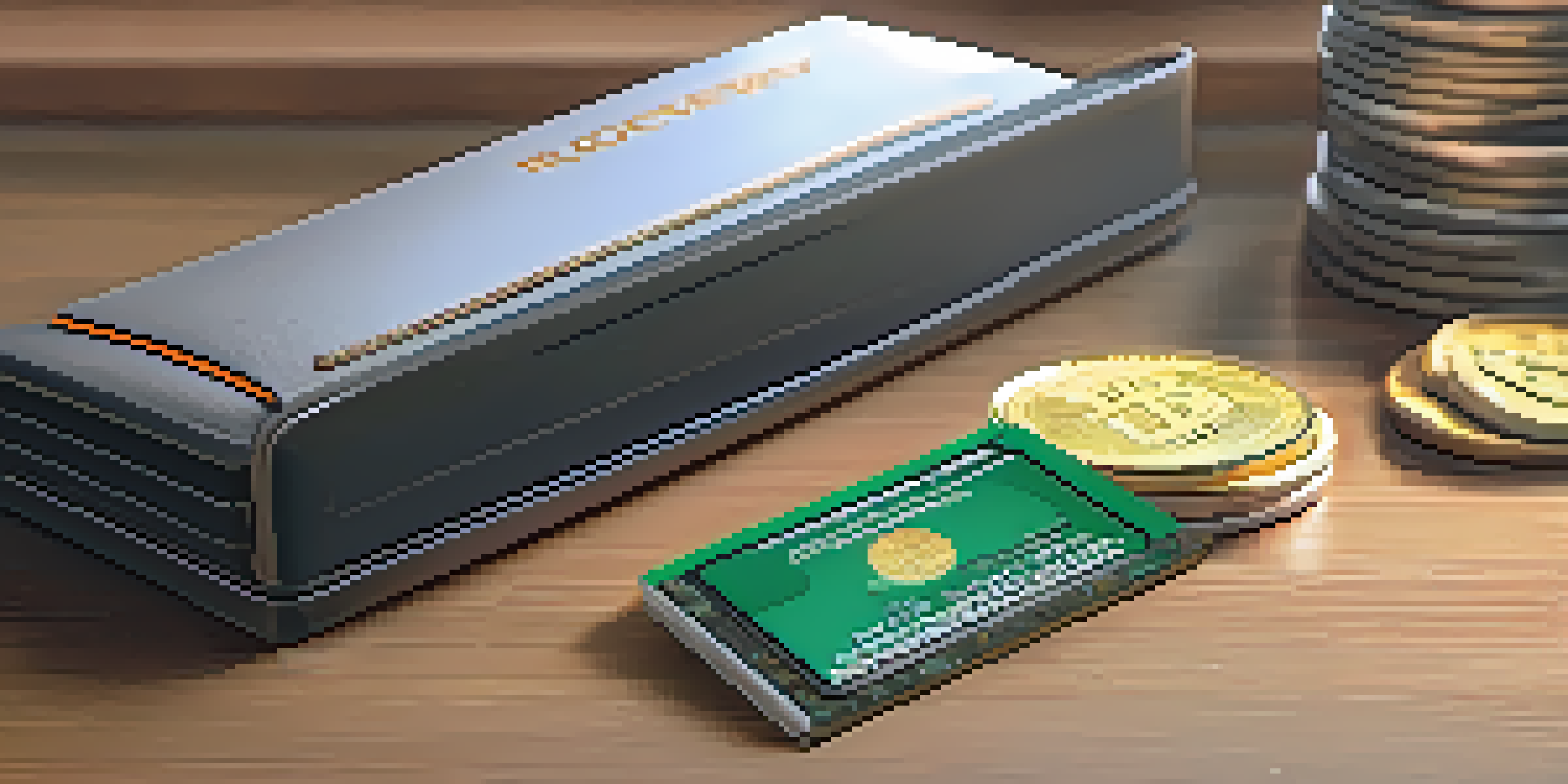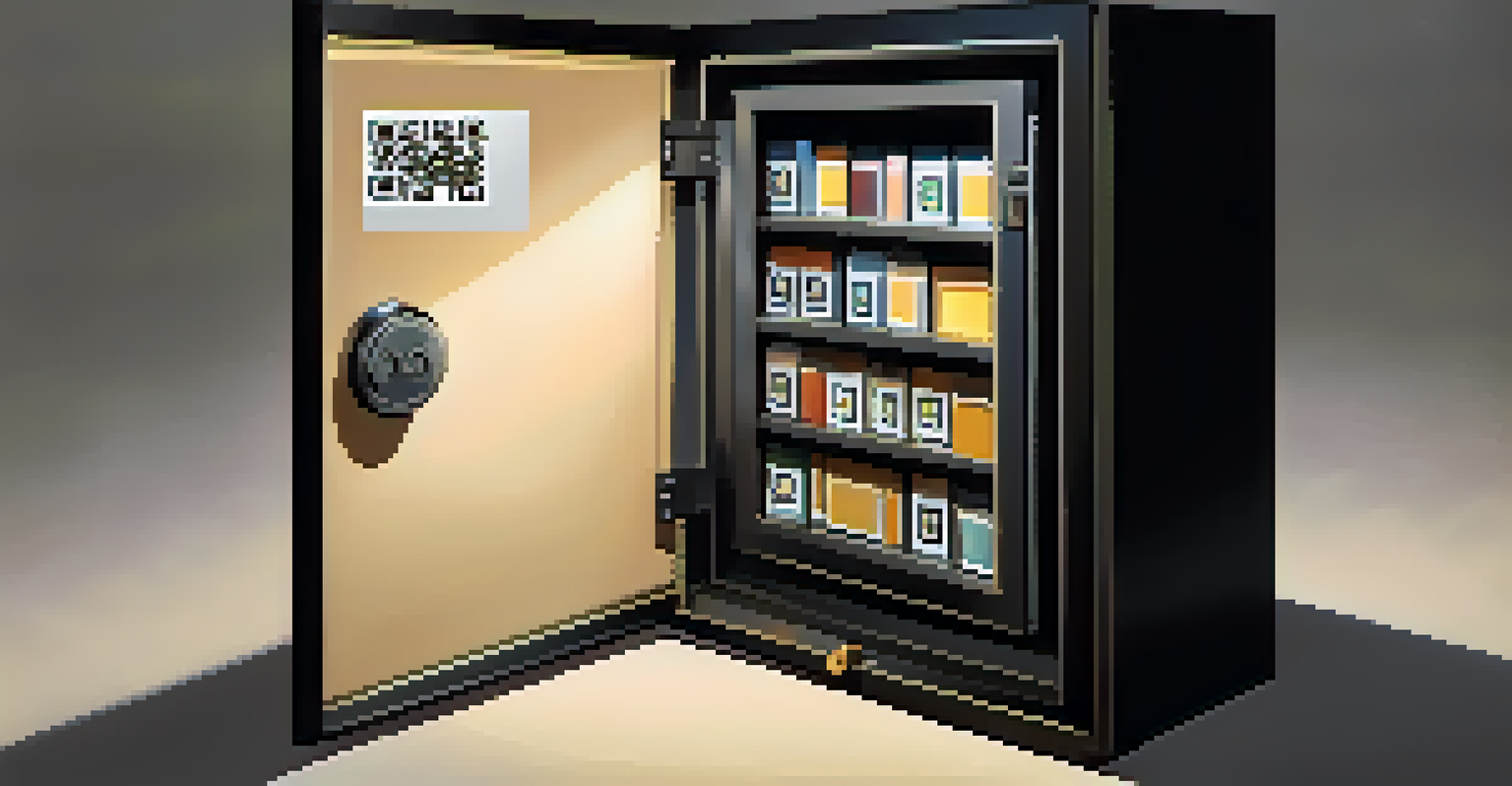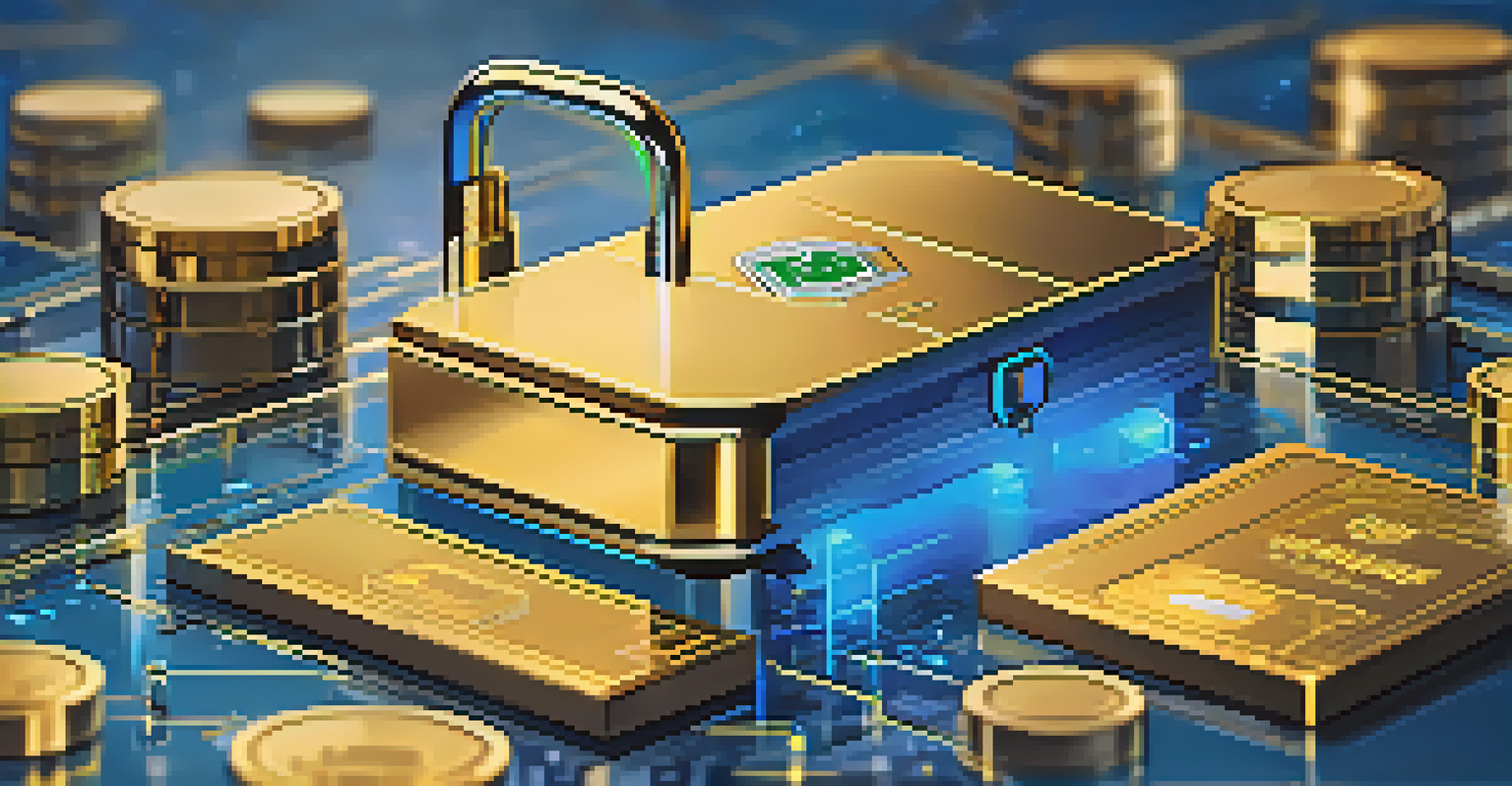Using Cold Wallets for Enhanced Bitcoin Security Measures

What Are Cold Wallets and How Do They Work?
Cold wallets, often referred to as cold storage, are offline devices or paper that store your Bitcoin securely. Unlike hot wallets, which are connected to the internet, cold wallets are not vulnerable to online threats, making them a robust option for storing your cryptocurrency. Think of cold wallets as a safe deposit box for your digital assets—kept away from prying eyes.
The best way to store your Bitcoin is in a cold wallet, because it is the most secure way of holding your assets.
These wallets can take various forms, including hardware devices like Trezor or Ledger, and even paper wallets that contain your private keys. The fundamental principle behind cold wallets is to remove them from any online interaction, thus minimizing the risk of hacks or malware attacks. By keeping your private keys offline, you effectively shield your funds from the dangers of the digital world.
Using a cold wallet doesn’t mean you can't access your Bitcoin; it just means you need to take extra steps to do so. When you want to make a transaction, you’ll connect your cold wallet to a device, sign the transaction, and then disconnect it again. This extra layer of security is what makes cold wallets a preferred choice for long-term investors.
Why Choose Cold Wallets for Bitcoin Security?
The primary reason for opting for cold wallets is security. With the rise of cyberattacks and phishing scams, keeping your Bitcoin offline dramatically reduces the risk of theft. Imagine trying to rob a bank vault that’s closed and locked; it’s much harder than accessing cash in an open register. Cold wallets act as that fortified vault.

Moreover, cold wallets give you total control over your assets. When you store Bitcoin in a hot wallet managed by an exchange, you’re essentially trusting them with your private keys. But with a cold wallet, you hold the keys, and thus, the responsibility for your funds. This sense of ownership can be empowering for many investors.
Cold Wallets Offer Enhanced Security
Cold wallets provide a secure method to store Bitcoin offline, significantly reducing the risk of online theft.
Lastly, cold wallets are usually more durable and can last for years without needing updates or constant maintenance. Unlike software wallets, which might require regular updates to fend off new threats, a well-secured cold wallet can remain untouched until you need it. This reliability is another reason why many opt for this method.
Different Types of Cold Wallets Explained
Cold wallets come in various formats, each with its own set of pros and cons. Hardware wallets are physical devices directly designed for securely storing Bitcoin, while paper wallets involve printing your keys on a piece of paper. Each type caters to different user preferences and security needs, similar to how some people prefer traditional savings accounts while others opt for investment portfolios.
Not your keys, not your coins.
Hardware wallets, like Ledger and Trezor, are user-friendly and provide a seamless experience for managing multiple cryptocurrencies. They often come with additional security features, such as PIN protection and recovery phrases, making them a popular choice among serious investors. On the other hand, paper wallets are more suited for those who prefer a no-cost, minimalist approach but require careful handling to avoid damage.
Ultimately, the choice of cold wallet depends on your individual needs and comfort level with technology. Some may prefer the tactile nature of a paper wallet, while others might feel more secure with a hardware device. Understanding these options can help you make an informed decision about securing your Bitcoin.
Setting Up Your Cold Wallet: A Step-by-Step Guide
Setting up a cold wallet may seem daunting, but it’s a straightforward process that can greatly enhance your Bitcoin security. First, choose the type of cold wallet that best suits your needs, whether it’s a hardware wallet or a paper wallet. Once you have your wallet, follow the manufacturer’s instructions or online guides to set it up safely and correctly.
For hardware wallets, this usually involves downloading the wallet’s software, initializing the device, and generating a recovery phrase. This phrase is crucial as it allows you to recover your assets if the device is lost or damaged. Treat this recovery phrase like a secret key—never share it or store it online!
Control Over Your Digital Assets
Using a cold wallet gives you complete control over your private keys, ensuring that you are the sole custodian of your funds.
If you’re opting for a paper wallet, make sure to generate it using a reputable online generator while ensuring your computer is offline during the process. Once generated, print it out and store it in a safe place. By following these steps, you’ll be well on your way to safeguarding your Bitcoin investments.
Best Practices for Maintaining Cold Wallet Security
Even with a cold wallet, there are best practices to follow to ensure your Bitcoin remains secure. First, always keep backups of your recovery phrases and private keys in secure locations, ideally in multiple places. This way, if one copy is lost or damaged, you’ll still have access to your funds, much like having spare keys for your house.
Additionally, be cautious of physical threats. Since cold wallets are offline, they can be susceptible to physical theft. Store your hardware wallets in safe places, and if you're using a paper wallet, consider using a safe deposit box for added security. Treat your cold wallet with the same care you would a physical asset.
Lastly, periodically check and update your security measures. Although cold wallets are generally safe, it's good practice to stay informed about the latest security threats and advancements in technology. Regularly reviewing your security protocols can help you stay ahead of potential risks.
Common Mistakes to Avoid with Cold Wallets
While cold wallets are a secure option, there are common mistakes that can put your Bitcoin at risk. One of the biggest pitfalls is failing to properly secure your recovery phrase. Many users write it down and store it in easily accessible places, making it vulnerable to theft. Remember, if someone gains access to your recovery phrase, they can access your funds.
Another mistake is neglecting to keep your cold wallet’s firmware updated. For hardware wallets, manufacturers often release updates to improve security. Ignoring these updates can leave your wallet vulnerable, just like not changing the locks on your doors after a break-in.
Best Practices for Cold Wallets
Maintaining cold wallet security involves backing up recovery phrases, securing physical storage, and staying updated on security measures.
Lastly, don’t be tempted to share information about your cold wallet with anyone, even those who seem trustworthy. The digital currency community is filled with scams, and sharing your wallet details can lead to unfortunate consequences. Always prioritize your privacy and security when handling cold wallets.
The Future of Bitcoin Security with Cold Wallets
As the cryptocurrency landscape continues to evolve, cold wallets will likely play an even more critical role in Bitcoin security. With increasing sophistication in cyber threats, investors are looking for robust solutions to protect their assets. The inherent security features of cold wallets make them a steadfast choice for anyone serious about safeguarding their cryptocurrencies.
Moreover, as more individuals and institutions adopt Bitcoin, the demand for secure storage solutions will grow. This could lead to innovations in cold wallet technology, making them even more user-friendly while enhancing security measures. Just as traditional banking has evolved, so too will the methods we use to protect our digital currencies.

Ultimately, investing in a cold wallet is a proactive step toward financial security in the realm of cryptocurrencies. Whether you’re a seasoned investor or new to Bitcoin, understanding and utilizing cold wallets can significantly enhance your peace of mind as you navigate this exciting digital landscape.